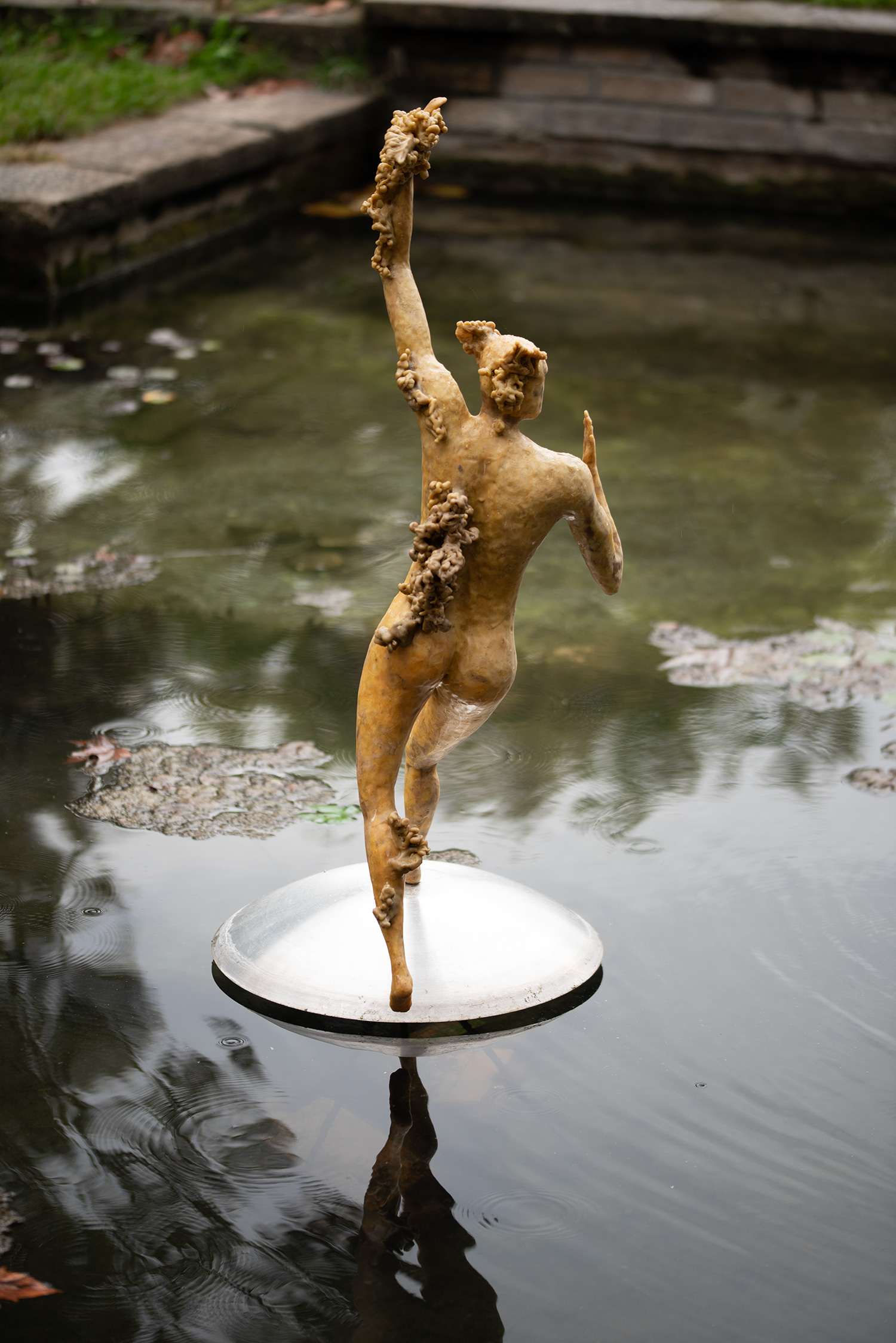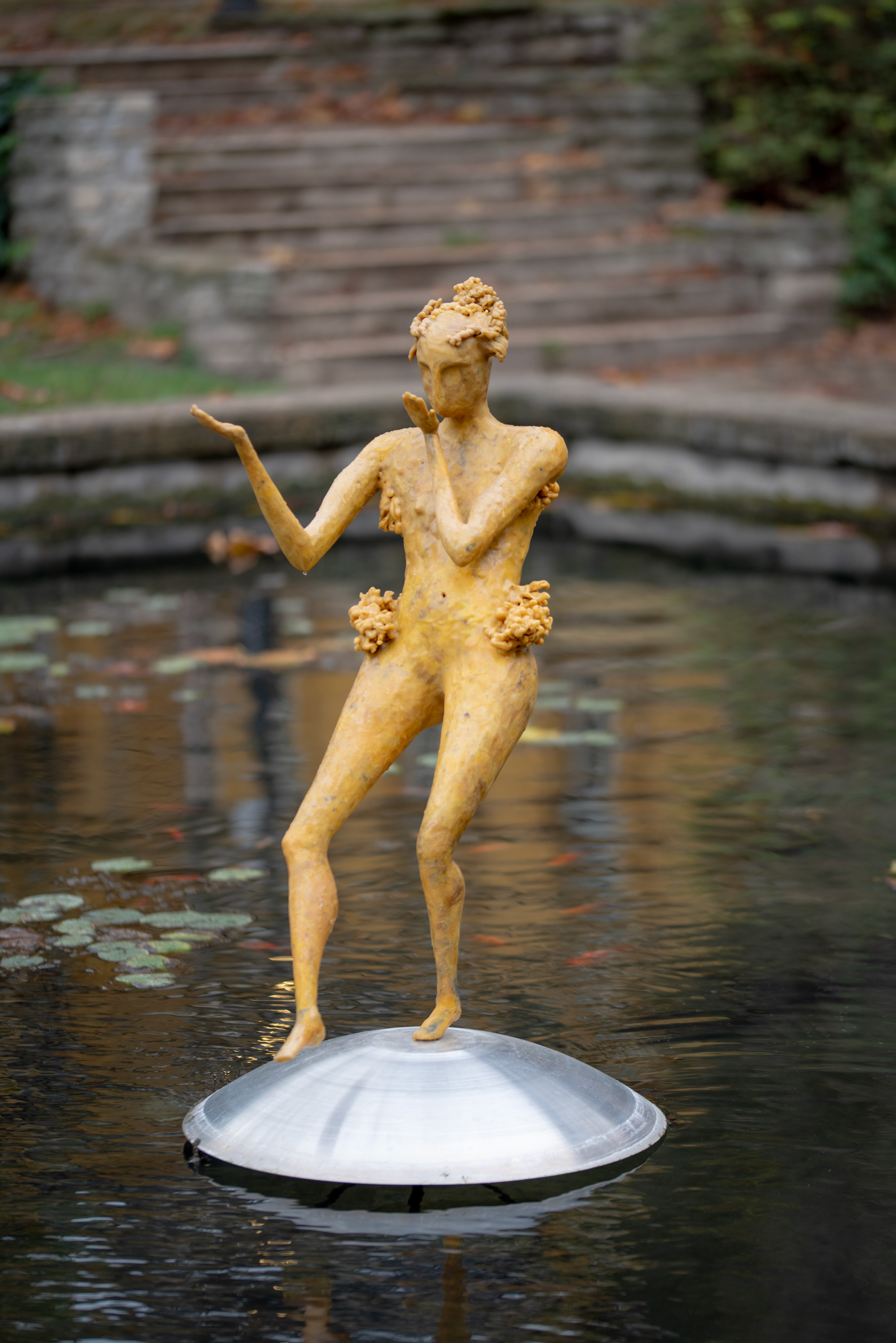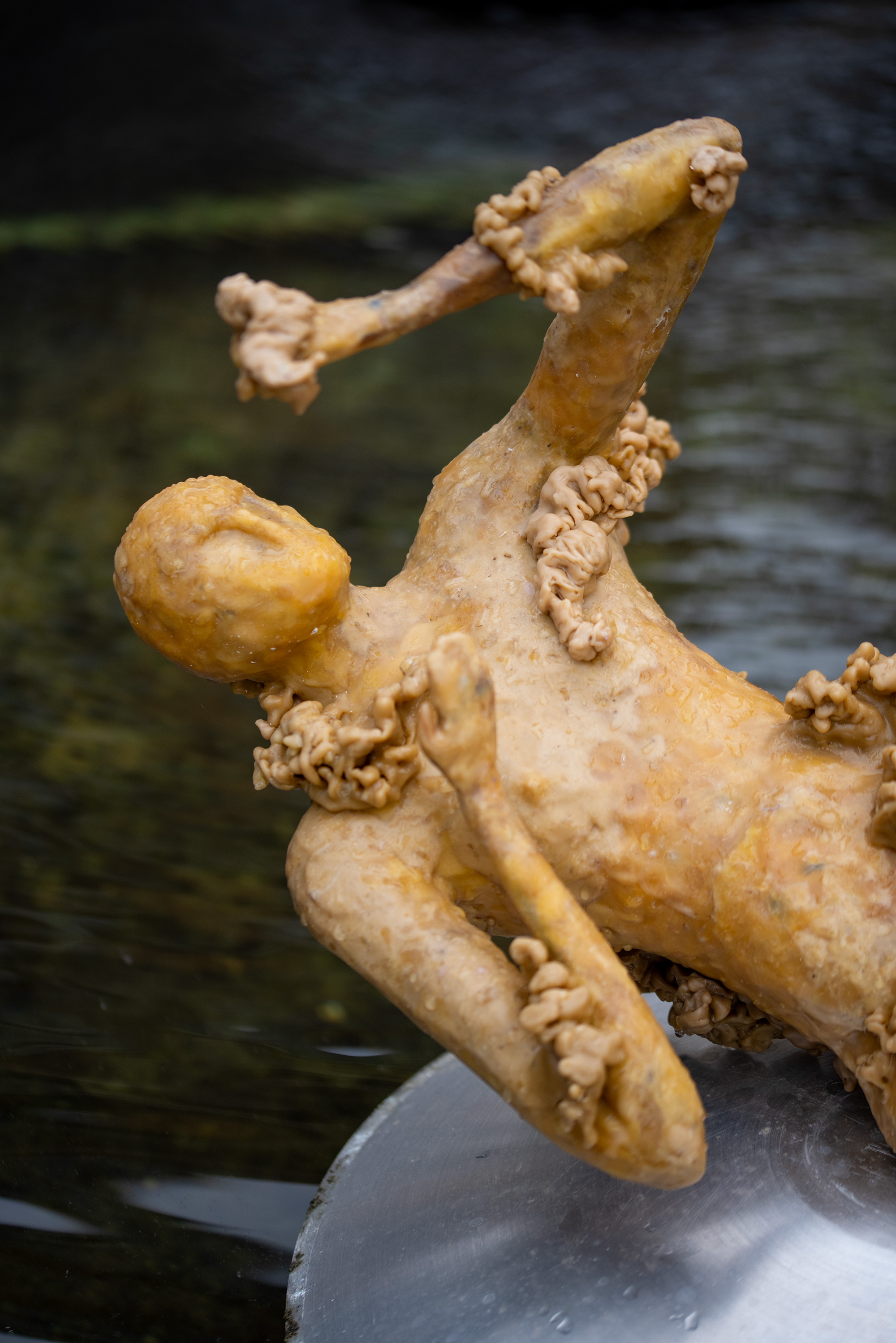Memory that could have been
Emlék, ami lehetett volna
public monument in the frameworks of Sidewalk, the 1st Budapest Biennale of Contemporary Public Art
2023.09.22.-10.23.

Memory that could have been is a queer anti-monument that was standing in a small pond next to the Lukács Thermal Bath for one month in the frameworks of the 1st Budapest Biennale of Contemporary Public Art, organized by Budapest Gallery.
The ephemer monument was raised for all the memories that throughout the history of Budapest could never fully be realised and remained desires and hopes. These dreams belong to the LGBTQ+ minorities of the capital that have been living under systematic oppression through the entire history of Budapest. The installation was not standing for heroic figures of an emancipatory movement but rather for the unsung masses that have lived their lives with secrets, sacrifices and denial. Those who were not privileged to be heroic. A monument for the un-heroic heroes, of couragelessness, of failure, of survival, of vulnerability and resilience.
The installation itself is mobilizing its vulnerability, proudly showing off its figures made of beeswax, a material that can be easily hurt but is very enduring if it stays in the right conditions. In this sense material itself is a "queer", ambivalent material, because it holds both the qualities of being very sensitive and highly resilient. As Judith Butler's theory of the politics of vulnerability establishes it, displaying the vulnerability of the sculptures and the history that they reference instead of hiding it, is in a way a protesting force.
The figures are standing in ambivalent positions, in almost impossible moments of movement. The dancing poses reference antique sculptures of dancing satyrs and fauns and also more contemporary practices of dance in queer subcultures, like the voguing scenes. In voguing the hands are used to tell a narrative and are often mimicking mirrors to reflect the beauty and confidence of the performer. The three figures of the installation are also covered in amorphous forms of wax that the artist uses to materialize the effect of the outside world onto the bodies of the non-normative figures. Their struggle with this sticky and inevitable substance of the outside world depicts a narrative in three stages in which some learn to live with it in a resilient way, putting it proudly on display but others are struggling under its weight.
The park where Memory that could have been was standing has been a traditional cruising space for decades. The site specific aspect accentuates how this public park that is in a run-down condition, badly lit and unmonitored, can be a safe space for gay men. The installation is not a traditional monument, it is not monumental, nor made of precious materials like marble or bronze. It was blending into its surroundings, standing there in a humble and respectful way.
The project also included a way of awakening sensitivity towards its topic in the audience. There were three rituals linked to the monument for a limited number of people. For these, the participants had to register with a personal memory that could have been, sharing it only with the artist. They sent very personal stories of unfulfilled loves, untaken routes in their private life and other regrets or unaccomplished desires. At the rituals, the artist gave a little lecture and afterwards distributed a wax coin to everyone. Each coin had a personal symbol on them that was referring to their personal memory that could have been. They were facing a tough choice. In the spirit of remembrance they had to decide to either make a sacrifice and throw the coin in the pond - and by that agreeing to let go of the memory forever - or they could take the coin with themselves, put it on display somewhere visible at home, and swear that they will make that unrealized memory happen in one way or another, however abstract that might be. They did not know about this choice when registering. In this "gentle trap" they got involved and grew more sensitive to the story of the monument in a very unexpected and personal way.
In the frame of the event series: Budapest 150. Organizer: Budapesti History Museum – Budapest Gallery. Kamilla Dózsa, Nikolett Erőss, Flóra Gadó, Júlia Hermann, Dalma Eszter Kollár.
Photos: Dávid Bíró
Magyarul:
Az Emlék, ami lehetett volna egy queer anti-emlékmű, amely egy hónapig állt a Lukács Gyógyfürdő melletti kis tóban a Budapest Galéria által szervezett I. Budapesti Köztéri Kortárs Művészeti Biennálé keretein belül.
Az efemer emlékmű mindazoknak az emlékeknek állt, amelyek Budapest történelme során soha nem valósulhattak meg teljesen, csupán vágyak és remények maradtak. Ezek az álmok a főváros LMBTQ+ kisebbségeihez tartoznak, akik Budapest egész történelme során szisztematikus elnyomás alatt éltek és élnek. Az installáció nem egy emancipációs mozgalom hősies alakjait jelenítette meg, hanem azokat az arctalan tömegeket, akik titkokkal, áldozatokkal és tagadással élték az életüket. Azokat, akik nem voltak olyan kiváltságosok, hogy hősök lehessenek. Egy emlékmű a hősietlen hősöknek, a bátortalanságnak, a kudarcnak, a túlélésnek, a sebezhetőségnek és a rezilienciának.
Az installáció büszkén bemutatva a méhviaszból készült figurákat, maga is mozgósította sebezhetőségét, hiszen anyaga könnyen megsérthető, de nagyon tartós, ha megfelelő körülmények között marad. Ebben az értelemben maga az anyag egy "queer", ambivalens anyag, mivel egyszerre rendelkezik nagyon érzékeny és rendkívül ellenálló tulajdonságokkal. Judith Butler a “sebezhetőség politikájáról” írt elméleteit követve megállapítható, hogy az installáció anyagának és témájának sebezhetőségét vállalva, nem pedig elrejtve, egy ellenálló erőt mozgósít.
A figurák ambivalens pozíciókban állnak, a mozgás szinte lehetetlen pillanataiban. A pózok egyrészt a táncoló szatírokat és faunokat ábrázoló antik szobrokra, másrészt a queer szubkultúrák kortárs táncgyakorlataira, például a voguing közegekre utalnak. A voguingban a kezek mozgása narratívát jelenít meg, gyakran utánozva tükröket, amelyek az előadó szépségét és magabiztosságát tükrözik. Az installáció három figuráját amorf viaszformák is borítják, amelyeket a művész arra használ, hogy materializálja a külvilág hatását a nem normatív figurák testén. A külvilág e ragacsos és elkerülhetetlen anyagával való küzdelmük egy három szakaszból álló jelenetet ábrázol, amelyben egyesek megtanulnak rugalmasan együtt élni vele, büszkén felmutatva azt, mások viszont küzdenek a súlya alatt.
Az Elvis Presley park, ahol az Emlék, ami lehetett volna állt, évtizedek óta hagyományos cruising tér. A helyspecifikus szempont azt hangsúlyozza, hogy ez a leromlott állapotú, rosszul megvilágított és felügyelet nélküli közpark hogyan lehet biztonságos hely a meleg férfiak számára. Az installáció nem hagyományos emlékmű, hiszen nem monumentális, és nem is olyan nemes anyagokból készült, mint a márvány vagy a bronz. Belesimult a környezetébe, szerényen állva ott.
A projekt egy újfajta érzkenyítési gyakorlatot is magában foglalt. Az emlékműhöz három rituálé kapcsolódott, korlátozott számú ember számára. Ezekhez a résztvevőknek egy személyes "emlékkel, ami lehetett volna" kellett jelentkezniük, és azt csak a művésszel kellett megosztaniuk. Nagyon személyes történeteket küldtek be beteljesületlen szerelmekről, be nem járt utakról és egyéb megbánásokról vagy be nem teljesült vágyakról a magánéletükben. A szertartásokon a művész tartott egy rövid előadást, majd utána mindenkinek kiosztott egy viaszérmét. Minden érmén egy személyes szimbólum volt, amely az ő személyes emlékükre utalt. Nehéz döntés előtt álltak. Az emlékezés jegyében dönteniük kellett, hogy vagy áldozatot mutatnak be, és a tóba dobják az érmét - és ezzel beleegyeznek, hogy örökre elengedik az emléket -, vagy magukkal viszik az érmét, kiteszik otthon egy jól látható helyre, és megfogadják, hogy azt a meg nem valósult emléket - akármilyen absztrakt módon is - megvalósítják. A regisztrációkor nem tudtak erről a választásról. Ebbe a "szelíd csapdába" belekeveredve váratlan és személyes módon válhattak érzékenyebbé az emlékmű története és témája iránt.


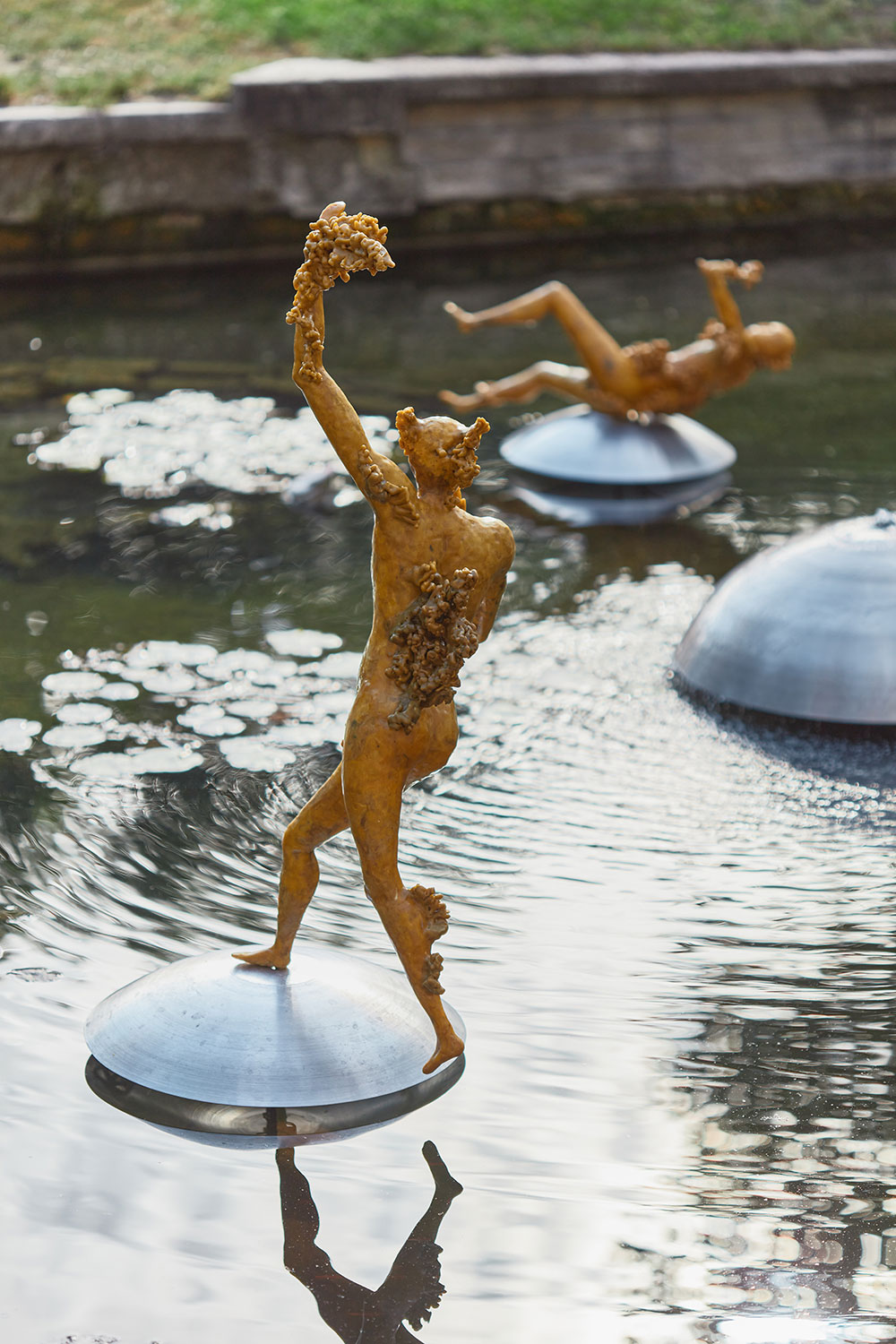
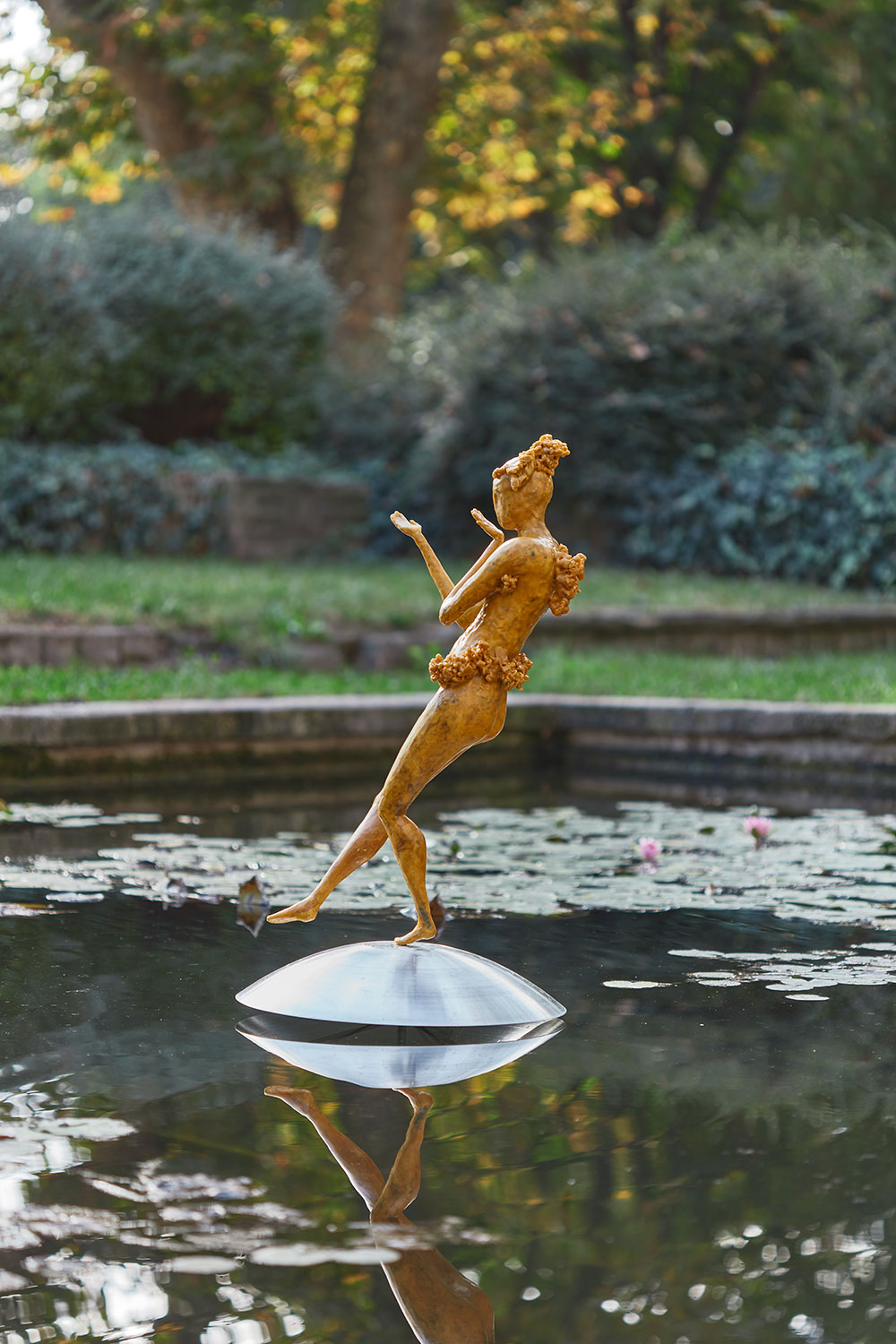
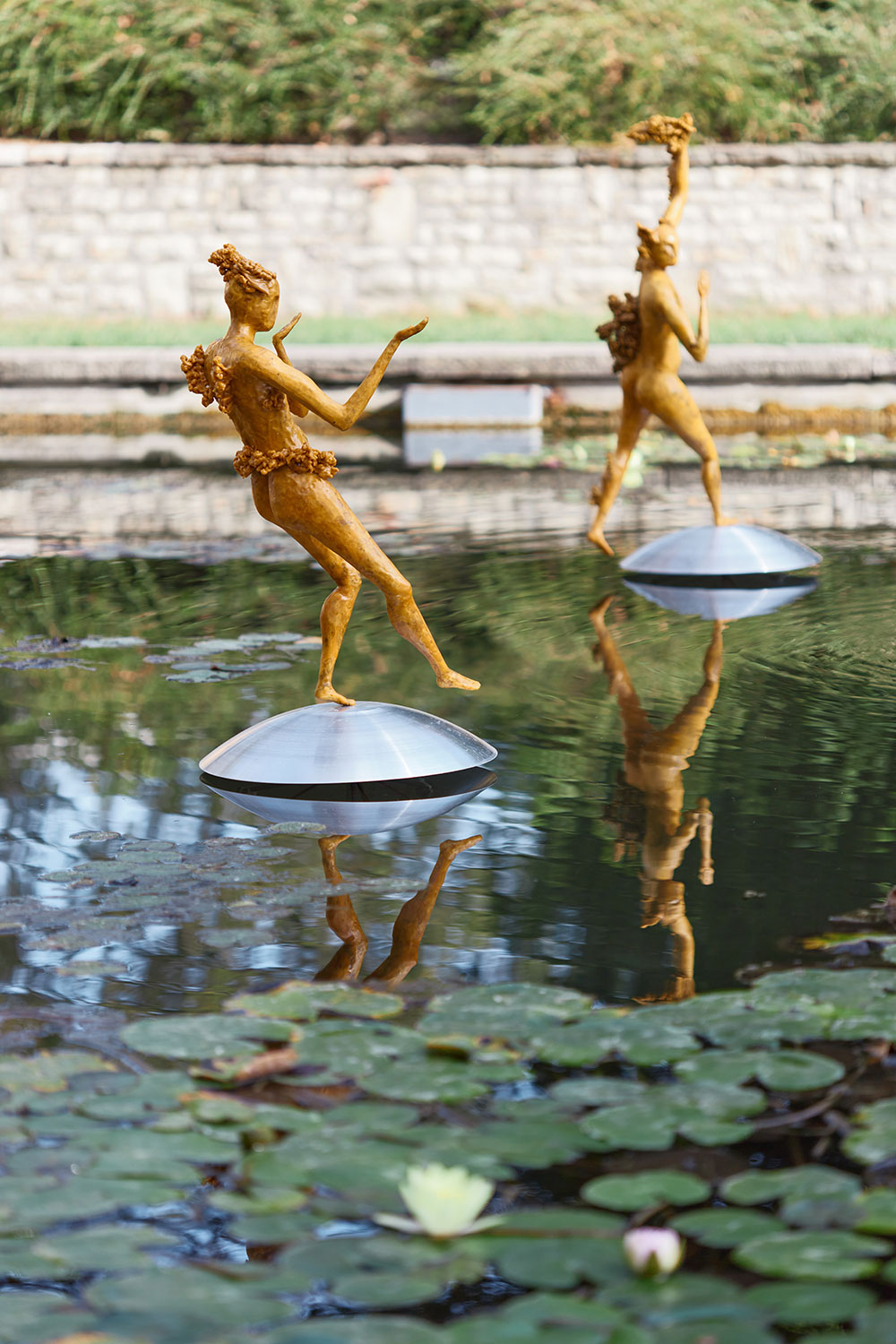


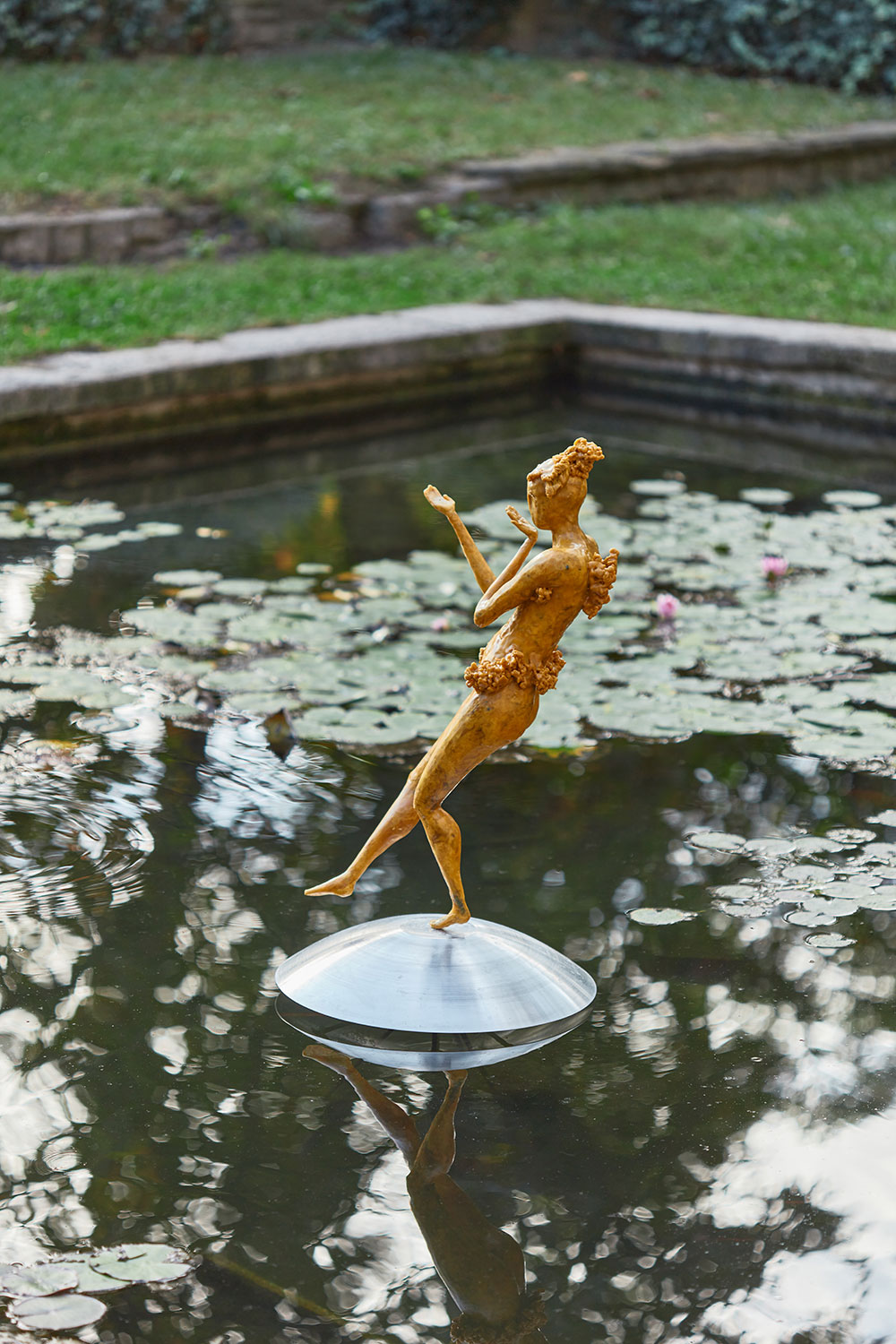
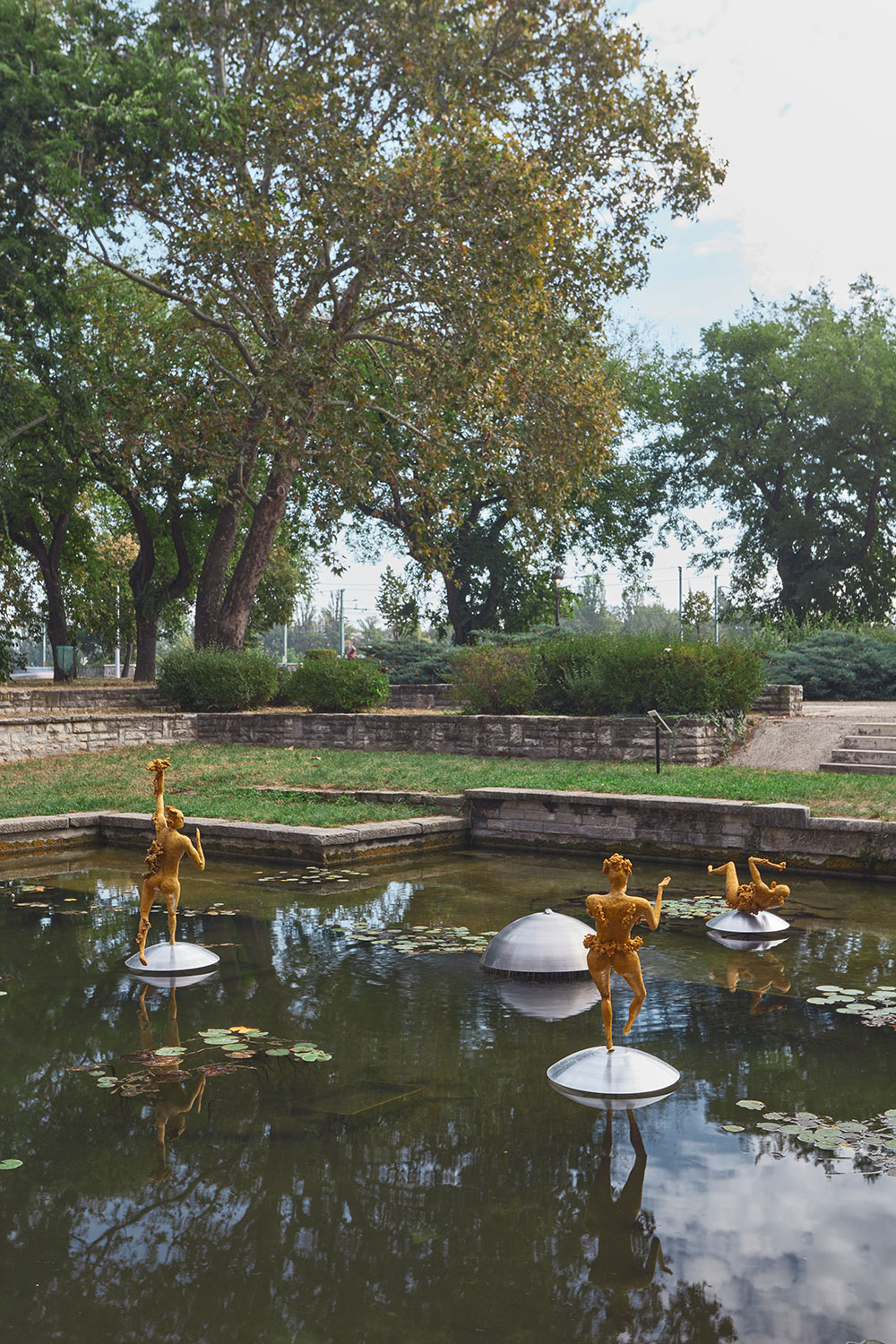
Photos by Dorottya Vékony at the end of the exhibition:
